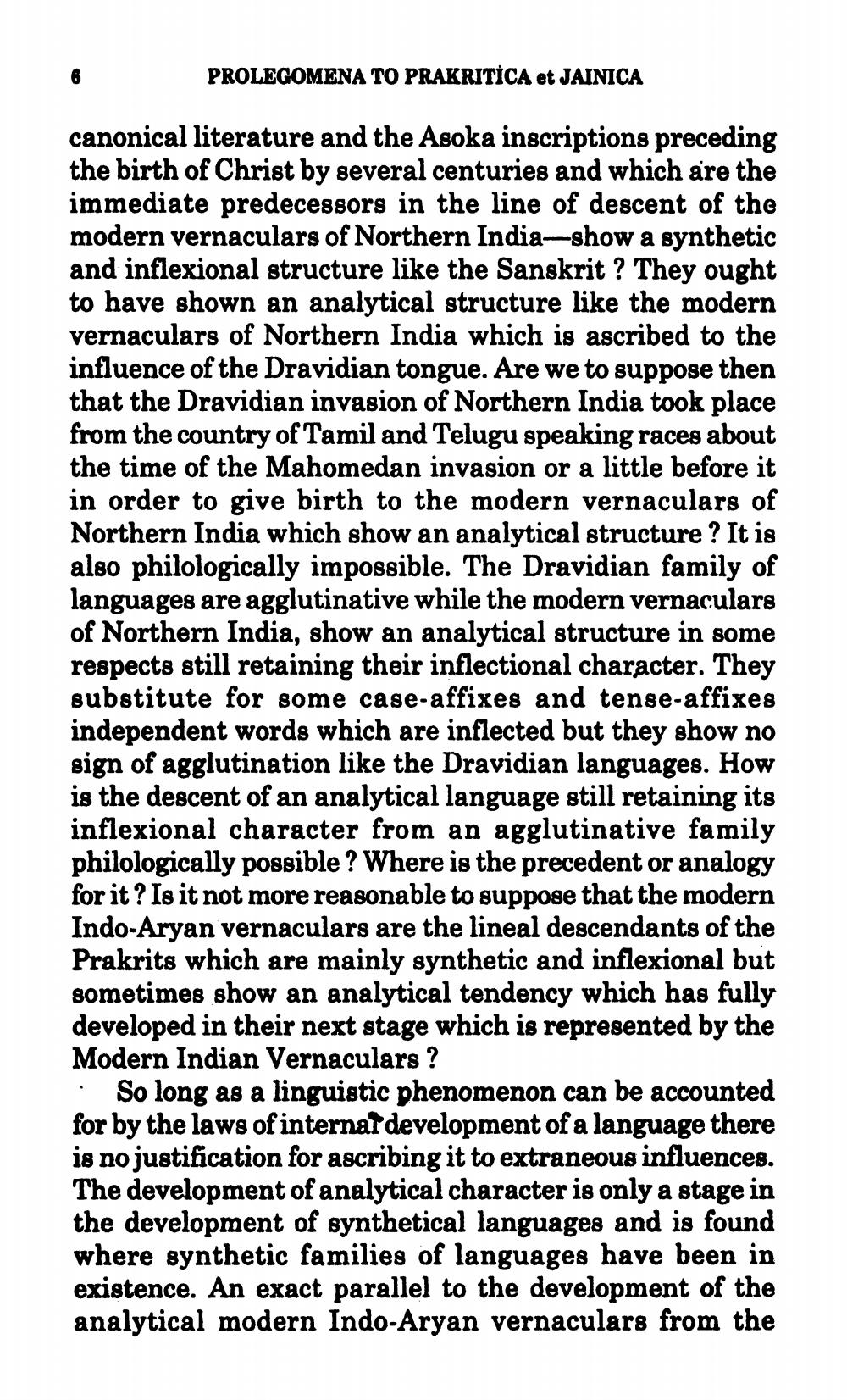________________
PROLEGOMENA TO PRAKRITICA et JAINICA
canonical literature and the Asoka inscriptions preceding the birth of Christ by several centuries and which are the immediate predecessors in the line of descent of the modern vernaculars of Northern India--show a synthetic and inflexional structure like the Sanskrit ? They ought to have shown an analytical structure like the modern vernaculars of Northern India which is ascribed to the influence of the Dravidian tongue. Are we to suppose then that the Dravidian invasion of Northern India took place from the country of Tamil and Telugu speaking races about the time of the Mahomedan invasion or a little before it in order to give birth to the modern vernaculars of Northern India which show an analytical structure ? It is also philologically impossible. The Dravidian family of languages are agglutinative while the modern vernaculars of Northern India, show an analytical structure in some respects still retaining their inflectional character. They substitute for some case-affixes and tense-affixes independent words which are inflected but they show no sign of agglutination like the Dravidian languages. How is the descent of an analytical language still retaining its inflexional character from an agglutinative family philologically possible? Where is the precedent or analogy for it? Is it not more reasonable to suppose that the modern Indo-Aryan vernaculars are the lineal descendants of the Prakrits which are mainly synthetic and inflexional but sometimes show an analytical tendency which has fully developed in their next stage which is represented by the Modern Indian Vernaculars ? . So long as a linguistic phenomenon can be accounted for by the laws of internal development of a language there is no justification for ascribing it to extraneous influences. The development of analytical character is only a stage in the development of synthetical languages and is found where synthetic families of languages have been in existence. An exact parallel to the development of the analytical modern Indo-Aryan vernaculars from the




